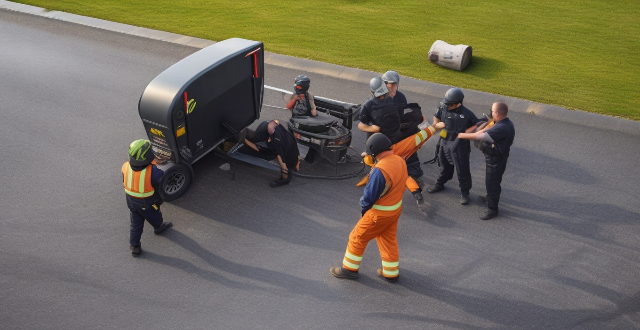Car racing events implement various safety measures for drivers, crew members, and spectators. Drivers wear fire-resistant suits and helmets, and cars have roll cages and fire suppression systems. Crew members wear protective gear and follow strict pit road safety rules. Spectator areas are separated from the track by fences and barriers, and emergency evacuation plans are in place. General safety measures include medical support, trained marshals and spotters, and a centralized control room to monitor all aspects of the race. These measures aim to ensure the well-being of everyone involved while maintaining the excitement of the event.

Safety Measures in Car Racing Events
Car racing events are known for their high speeds and thrilling action, but they also come with inherent risks. To ensure the safety of drivers, crew members, and spectators, various safety measures are taken during these events. Here's a detailed look at some of the most common safety practices:
For Drivers:
- Safety Equipment: Drivers are required to wear fire-resistant suits, helmets, gloves, and shoes. The helmets are specially designed to protect against impact and fire.
- Roll Cages: Race cars are equipped with roll cages that provide additional protection in case of a rollover.
- Seat Belts and Harnesses: Drivers are secured with five- or six-point harnesses to keep them firmly in place during high-speed maneuvers.
- Fire Suppression Systems: These systems, which may include extinguishers and automatic systems, are installed in race cars to mitigate fire risks.
- Vehicle Inspections: Before each event, vehicles undergo rigorous inspections to ensure they meet safety standards.
For Crew Members:
- Protective Gear: Crew members often wear helmets, gloves, and protective clothing while working on the cars.
- Pit Road Safety: Pit road is strictly regulated to prevent accidents between crew members and vehicles.
- Communication Systems: Radio communication systems allow for constant contact between drivers and their teams for real-time updates and warnings.
For Spectators:
- Fencing and Barriers: Spectator areas are separated from the track by sturdy fences and barriers to prevent debris from entering the crowd.
- Emergency Evacuation Plans: Clearly marked exit routes and evacuation procedures are in place in case of emergencies.
- Announcements and Signage: Regular announcements about safety protocols and signs indicating emergency exits are present throughout the venue.
General Safety Measures:
- Medical Support: Ambulances and medical teams are on standby at all times to provide immediate assistance in case of accidents.
- Marshals and Spotters: Trained marshals and spotters monitor the track for any incidents and can quickly respond to accidents.
- Race Control: A centralized control room monitors all aspects of the race, including weather conditions, track status, and vehicle performance.
In conclusion, car racing events employ a multi-layered approach to safety, addressing potential risks for drivers, crew members, and spectators alike. By implementing these measures, organizers strive to create an environment where the excitement of racing can be enjoyed without compromising the well-being of those involved.